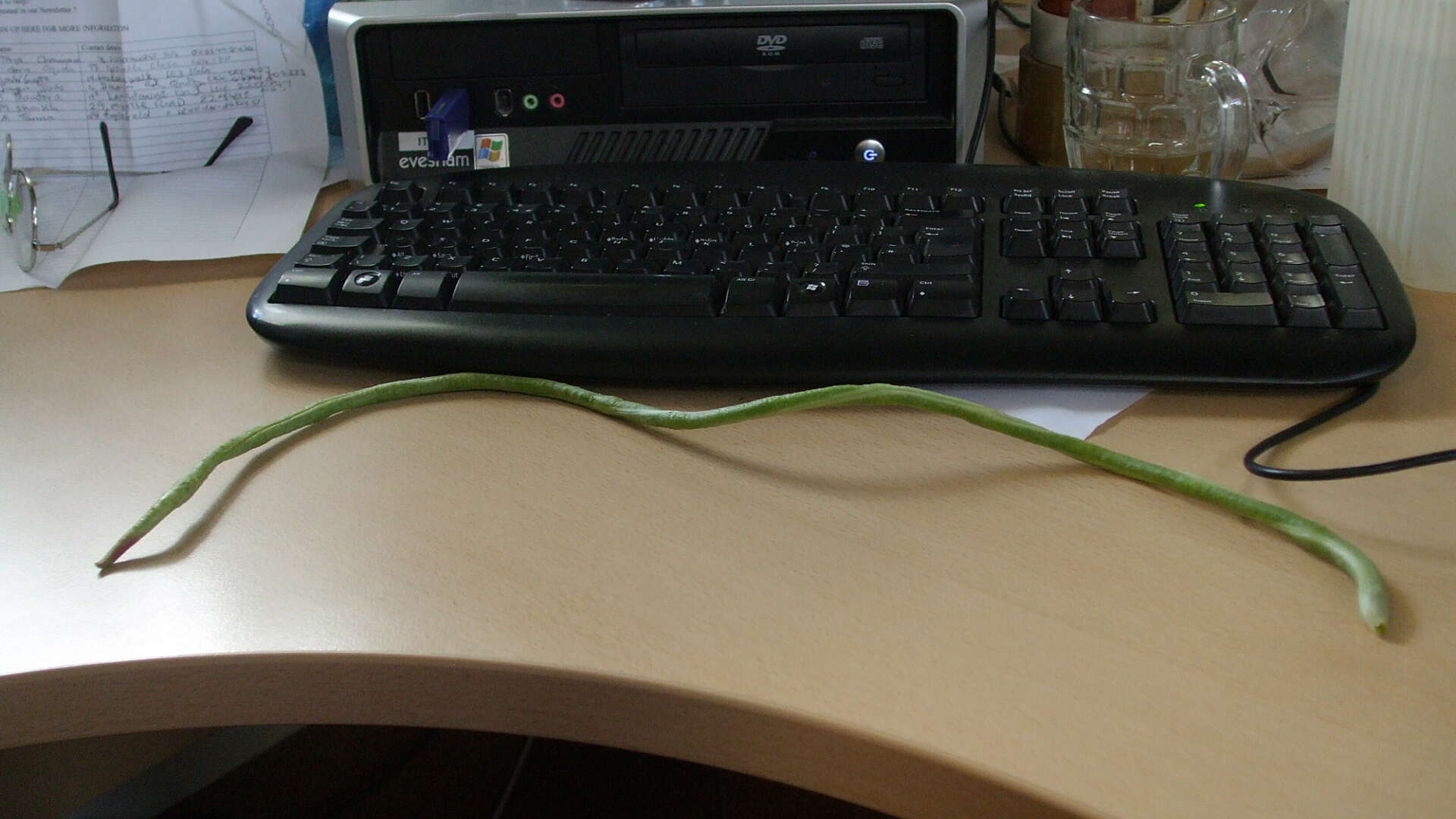
Yard long bean
| Growing calendar | |
|---|---|
| Sow indoors | Mid Apr - mid May |
| Sow outdoors | Late May - June (though best under cover) |
| Plant out | June |
| Harvest | End July - Oct |
Yard long beans (Vigna unguiculata subsp. sesquipedalis ) differ from cowpeas in their very slender long green beans, which have a beautifully delicate flavour.
Other names for yard-long beans include chori (Hindi), bora (Caribbean) and snake bean. Some varieties are bred for tropical conditions, with equal length of day and night, and are not suitable for the UK unless grown with supplementary lighting or heating.
Varieties available commercially include a burgundy red and a striped podded form. We found Asparagus Long Green does well.
Yard long beans from Africa are often black seeded, while those from Asia and America are usually brownish in colour. All have a large, pale flange (hilum) attached to the seed.
How to grow
Yard long bean is a dry season, tropical crop, which favours hot temperatures. It really needs a tunnel or a glasshouse to get any sort of worthwhile result, although it has been known to produce beans outside in hot summers.
For indoor sowing, sow into small pots inside in mid April, to get the plants going. Transplant into the final position once all risk of frost has passed in late May or early June.
They can be grown similar to runner beans, up poles made into wigwams in groups of six or eight plants. Plants twine anticlockwise and will climb as tall as runner beans. Try three plants to a growbag or two for a 30cm/12in (or larger) pot. Water plants in thoroughly after transplanting.
Plants produce deep purple-blue flowers from late June, which open overnight so are only seen in early mornings or on dull days. They are pollinated by a wide range of insects, including the heavier species of flies, moths or bumblebees, so glasshouse doors should be left open if possible at night to allow insects in.
Harvesting yard long beans
Pick pods from 28cm long, from mid July. Beans should be harvested when they are no thicker than a biro, otherwise they turn leathery. Sadly, if a bean ever reaches a yard long it’s likely to be over-mature and very tough.
Once bean production starts, it is important to pick at least twice a week, to ensure production continues. The entire pods are eaten, and should be consumed within 1 or 2 days after picking.
How to use yard long beans
Fresh yard-long beans have a wonderful delicate flavour when steamed. In Vietnamese cooking they are chopped at the table and added to noodle soup. Protein-rich leaves can be boiled like spinach, after the tough stems are removed. Fresh beans don't keep well so store surplus in the fridge, as French beans.
If you are lucky enough to have a surplus of yard-long beans the excess seeds can be dried for cooking, but like dried kidney beans they must be soaked overnight and boiled hard for 10 minutes to destroy any possible toxins before simmering until tender.

Troubleshooting
Plants outside may not crop at all in low temperatures, particularly if the nights are cooler than usual. Don’t over-water, as they are used to growing under dry conditions. They will benefit from a light dressing of garden or green waste compost before transplanting. Regular feeding will help as they don’t fix nitrogen well in the UK.
Yard long beans may develop red spider mite if conditions are very hot and dry.
Seed saving
Use at least six plants for seed saving. They are partly self-fertile and don't cross with other bean species. Usually there are sufficient insect pollinators around to transfer pollen. Once seeds have started to form, the plant will cease to produce more pods, unlike French or runner beans.
Allow the pods to dry yellow and fatten on the plants, then remove, dry the pods thoroughly, and pod and dry as for French beans.
Despite the length, there are relatively few seeds inside a yard-long beam, only 10 or 12 seeds per long pod in the UK, although in the tropics, pods can contain up to 20. The seed lifespan is 2-3 years.
Put in a warm dry place to allow the seeds to ripen and dry completely.
| Growing notes | |
|---|---|
| Difficulty | Moderate |
| Germination time | 21-28 days |
| Average time to harvest | Around 2.5 months |
| Equipment needed | Protected growing area: supports |
| Average plant size | 2m tall and 15cm across |
| Family group to grow with | Legumes |
| Key nutritional content | Protein, magnesium, potassium, phosphorous, Vitamin A, fibre and folate |
| Latin name | Brassica oleraceae var. Acephela |